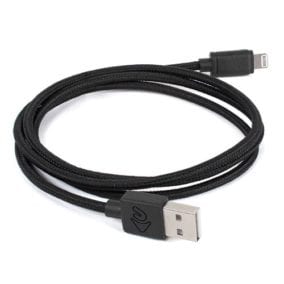
Note: The following is part one of OWC’s series looking into various Wireless charging technologies. This article will focus on inductive charging.
If there is one thing that users loathe when using their electronic devices, it’s an interruption. Those pesky interruptions can come in many forms, but one of the most irritating is a dead or dying battery. Naturally, this has sparked the pursuit of simpler and faster ways of charging our devices in order to minimize our work stoppages.
In what seems like a natural evolution of technology, the concept of wireless charging has been brought to our phones and tablets during the past few years. Many users hate being tethered to a cable when they’re using their devices and often even when they’re not using their devices. Eliminating cables makes sense in some instances.
And when done right, wireless charging can be convenient. In fact, it feels almost like magic. Just place your device on the charging pad and away it goes. But while the current wireless charging technology might feel magical, it’s not without its shortcomings.
First though, we’ll briefly explain current wireless charging.
In most cases, current wireless charging works via the concept of “inductive charging.” Inductive charging is actually fairly simple, using an electromagnetic field to transfer energy between two objects. Wireless charging stations send an alternating current via an induction coil, which then induces voltage in a separate induction coil located in the device. The induction coil in the device converts power from the electromagnetic field back into electrical current to power the battery
And while the advantages, such as simple functionality and less wear and tear on devices, are obvious, they are still outweighed by the current disadvantages. The most obvious disadvantage of wireless charging is the lack of efficiency in power delivery versus power draw. As it stands, wireless charging is estimated at about 60-80% efficiency meaning a significant amount of power is lost and waste heat is generated posing potential harm to batteries. There is also a matter of cost, especially if wireless charging capabilities aren’t built in to the device by the manufacturer.
But the biggest disadvantage for most remains the inefficient charging mentioned above which results in slower charges. During a typical day, many users only have time for short charge ups for their device and leave full charging sessions for when they’re sleeping at night. And when it comes to quick charging for a boost of power, nothing beats the speed of a tried-and-true cable connection.
Related: Charge your iPhone 6 or 6 Plus faster with an iPad adapter
And while plugging in a cable may be less convenient than placing a device on a charging pad, the speed and convenience of being able to have a cable with you at all times can be the difference between being stuck with a dead phone or enjoying a fully charged phone. Cables have also become ubiquitous because of their affordability making it easier than ever to have several spares in different locations. And after all, with current inductive charging technology, your phone still has to be touching the charging pad. This mitigates some of the convenience factor.
So until the efficiency and cost of inductive charging matches potential convenience factor, this version of wireless charging is best left on the shelf.
Coming soon on the Rocket Yard: What does the future of wireless charging hold? In our series on the new technology, we will explore new wireless charging concepts that transfer power over distances without contact by using magnetic resonance.









